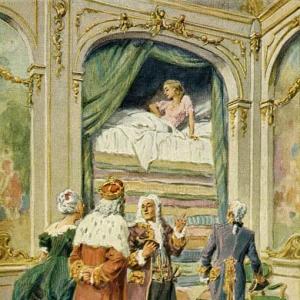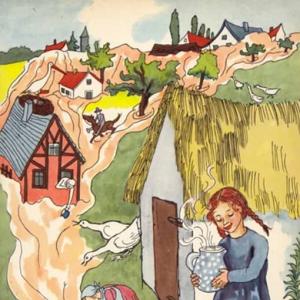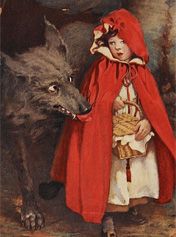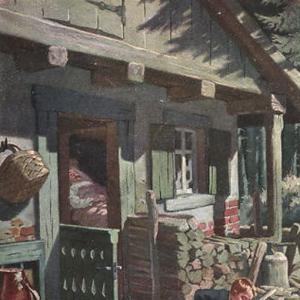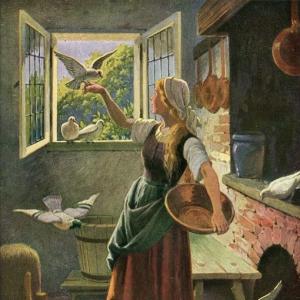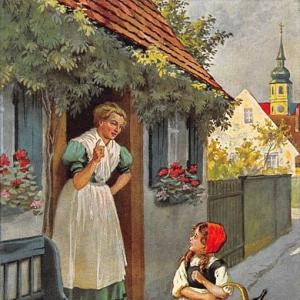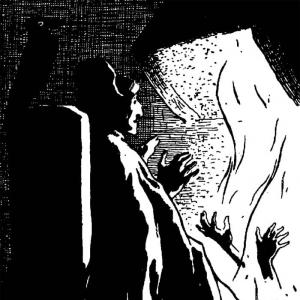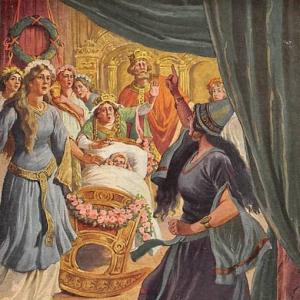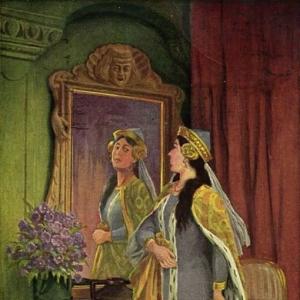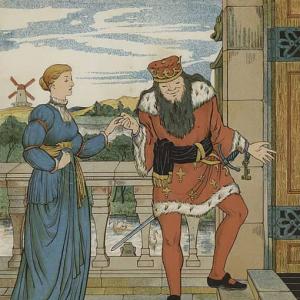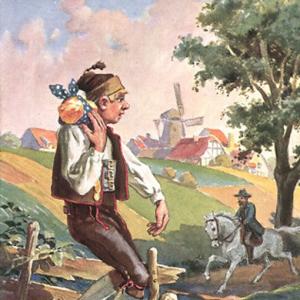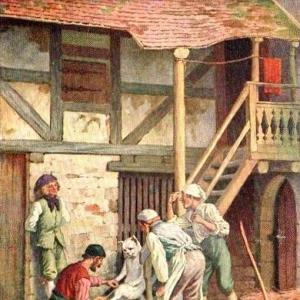Reading time: 3 min
How fortunate is the master, and how well all goes in his house, when he has a wise servant who listens to his orders and does not obey them, but prefers following his own wisdom. A clever John of this kind was once sent out by his master to seek a lost cow. He stayed away a long time, and the master thought, „Faithful John does not spare any pains over his work!“ As, however, he did not come back at all, the master was afraid lest some misfortune had befallen him, and set out himself to look for him. He had to search a long time, but at last he perceived the boy who was running up and down a large field. „Now, dear John,“ said the master when he had got up to him, „hast thou found the cow which I sent thee to seek?“ – „No, master,“ he answered, „I have not found the cow, but then I have not looked for it.“ – „Then what hast thou looked for, John?“ – „Something better, and that luckily I have found.“ – „What is that, John?“ – „Three blackbirds,“ answered the boy. „And where are they?“ asked the master. „I see one of them, I hear the other, and I am running after the third,“ answered the wise boy. Take example by this, do not trouble yourselves about your masters or their orders, but rather do what comes into your head and pleases you, and then you will act just as wisely as prudent John.
 Learn languages. Double-tap on a word.Learn languages in context with Childstories.org and Deepl.com.
Learn languages. Double-tap on a word.Learn languages in context with Childstories.org and Deepl.com.Backgrounds
Interpretations
Adaptions
Summary
Linguistics
„The Wise Servant“ is a short fairy tale collected by the Brothers Grimm, two German scholars, linguists, and cultural researchers named Jacob and Wilhelm Grimm. The brothers collected and published numerous folktales and legends, aiming to preserve the traditional stories of their culture. Their collection, titled „Grimm’s Fairy Tales“ or „Children’s and Household Tales“ (in German, „Kinder- und Hausmärchen“), was first published in 1812 and gained significant popularity.
The Brothers Grimm were instrumental in the development of German philology and folklore studies. Their work has had a lasting impact on Western literature and folklore, and their tales have been translated into various languages and adapted into numerous forms, including films, plays, and even ballets.
„The Wise Servant“ is one of the lesser-known tales from their collection, and it stands out due to its ironic and humorous tone. Unlike many other Grimm’s fairy tales, it does not feature magical creatures or enchanted objects. Instead, it focuses on the interaction between a master and his servant, exploring themes like wisdom, authority, and individualism. The story’s simplicity and wit make it an enjoyable read and provide an opportunity for various interpretations.
„The Wise Servant“ can be interpreted in several ways.
Irony and humor: The story is filled with irony and humor, as John’s actions and responses to his master’s inquiries are contrary to what is expected from a servant. The author’s use of irony challenges the reader’s expectations and adds an amusing twist to the story.
Rebellion against authority: The tale can be seen as a commentary on the importance of questioning authority and not blindly following orders. John does not follow his master’s commands and instead chooses to follow his own path, suggesting that one should not be limited by the constraints set by others.
Trust in one’s instincts: The story can also be interpreted as a message about trusting one’s instincts and intuition. John decides to pursue something he deems more valuable than the lost cow, representing the idea that following one’s instincts can lead to better outcomes than simply obeying orders.
Satirical critique of wisdom: The tale can be seen as a satirical critique of the conventional wisdom that one should always obey their master’s orders. John’s actions and the author’s suggestion that they are wise challenge this conventional wisdom, urging the reader to question what constitutes true wisdom.
Individualism vs. conformity: The story also explores the theme of individualism versus conformity. John’s decision to prioritize his own interests over his master’s orders highlights the importance of pursuing personal goals and desires, rather than simply conforming to societal expectations.
It’s important to note that interpretations may vary, and readers may find different meanings within the story based on their own perspectives and experiences.
„The Wise Servant“ is a classic fairy tale that has inspired many adaptations over the years. Here are a few examples.
„The Clever Servant“: This is a 1956 Soviet film that is based on the „The Wise Servant“. The film follows the story of a young prince who falls in love with a princess but must pass several tests before he can marry her. His clever servant helps him to overcome each challenge and win the princess’s hand.
„The Wise Little Hen“: This is a Disney animated short film from 1934 that is loosely based on „The Wise Servant“. The story follows a mother hen who enlists the help of her lazy friends in planting and harvesting corn. When they refuse to help, the hen uses her own intelligence and hard work to complete the task.
„The Golden Goose“: This is a fairy tale that is very similar to „The Wise Servant“. In this story, a young man helps an old man who rewards him with a golden goose. When the young man takes the goose to market, he is able to outsmart several people who try to steal it from him.
„The Foolish Servant“: This is a Russian folk tale that is similar to „The Wise Servant“. In this story, a servant is able to outsmart his master by pretending to be foolish. This allows him to avoid punishment and even gain some rewards.
„The Adventures of Pinocchio“: This classic children’s story features a clever puppet who uses his wit and intelligence to overcome various challenges and achieve his dream of becoming a real boy. Although not directly based on „The Wise Servant“, it shares similar themes of using intelligence and perseverance to achieve one’s goals.
Overall, „The Wise Servant“ has inspired many adaptations and variations over the years, each adding their own unique twist to the classic tale.
„The Wise Servant“ is a fairy tale by the Brothers Grimm that tells the story of a master and his clever servant, John. When the master sends John to find a lost cow, John takes a long time, causing the master to worry about his well-being. Eventually, the master sets out to find John himself and discovers him running around a large field.
When the master asks if John has found the cow, John admits that he hasn’t been looking for it, but has instead found something better: three blackbirds. The master, curious, inquires about their whereabouts. John replies that he sees one, hears another, and is chasing the third.
The tale highlights the idea that one should not concern themselves with their master’s orders or expectations but rather follow their own instincts and desires. This unconventional wisdom, as demonstrated by John, serves as the main takeaway of the story.
The short tale „The Wise Servant“ presents a humorous and ironic scenario that subverts the expectations of a traditional master-servant relationship. In classic fairy tales, servants are often depicted as obedient and diligent, fulfilling their masters‘ orders to the letter. However, in this story, John the servant takes a different approach—he listens to his master’s command but chooses not to follow it. Instead, he uses his own judgment to pursue something that he deems more valuable or interesting.
Tone and Style: The tone of the story is playful and ironic. The narrator’s use of irony is evident in the way the master’s praise of John’s diligence is contrasted with John’s actual behavior, which can be seen as negligent or insubordinate. The language is straightforward, with a conversational style that reflects the oral tradition of fairy tales. The simplicity of the dialogue between the master and John highlights the ironic twist in the story.
Characterization
The Master: Initially portrayed as trusting and somewhat naive. He assumes John’s prolonged absence is due to his diligence. This character is a classic archetype of the benevolent, albeit somewhat oblivious, authority figure.
John (the Servant): Characterized as clever and independent-minded. He challenges the conventional role of a servant by prioritizing his own judgment over explicit orders from his master. John embodies the archetype of the „wise fool,“ common in folklore, who follows his own path and inadvertently reveals the absurdity of blind obedience.
Themes
Obedience vs. Independent Thinking: The story explores the tension between following orders and exercising independent thought. John’s actions suggest that rigid adherence to instructions may not always lead to the best outcomes.
Subversion of Expectations: The tale plays with the expectations of the audience by overturning the predictable outcomes of servant-master dynamics. Instead of punishment or reprimand, John is presented in a positive light for his seemingly foolish but ultimately self-directed actions.
Moral Implications: The tale ends with an ironic comment advising the audience to follow John’s example, effectively questioning traditional values like obedience and conformity. It suggests that critical thinking and personal initiative may be more beneficial than blind compliance.
Metaphorical Elements
Blackbirds: In the story, blackbirds could symbolize something elusive and intriguing, in contrast to the ostensibly more practical goal of finding the lost cow. The pursuit of blackbirds instead of the cow highlights John’s departure from practical concerns in favor of personal curiosity.
Overall, „The Wise Servant“ uses humor and irony to critique unquestioned authority and explore the value of independent thinking. Through its clever narrative, the story encourages readers to reconsider traditional roles and the potential merits of looking beyond immediate tasks to find unexpected rewards.
Information for scientific analysis
Fairy tale statistics | Value |
|---|---|
| Number | KHM 162 |
| Aarne-Thompson-Uther-Index | ATU Typ 1681B |
| Translations | DE, EN, DA, ES, PT, IT, JA, NL, PL, RU, TR, VI, ZH |
| Readability Index by Björnsson | 27.1 |
| Flesch-Reading-Ease Index | 86 |
| Flesch–Kincaid Grade-Level | 5.4 |
| Gunning Fog Index | 8 |
| Coleman–Liau Index | 7.2 |
| SMOG Index | 7.4 |
| Automated Readability Index | 5.3 |
| Character Count | 1.314 |
| Letter Count | 983 |
| Sentence Count | 15 |
| Word Count | 252 |
| Average Words per Sentence | 16,80 |
| Words with more than 6 letters | 26 |
| Percentage of long words | 10.3% |
| Number of Syllables | 309 |
| Average Syllables per Word | 1,23 |
| Words with three Syllables | 8 |
| Percentage Words with three Syllables | 3.2% |

 Facebook
Facebook  Whatsapp
Whatsapp  Messenger
Messenger  Telegram
Telegram Reddit
Reddit